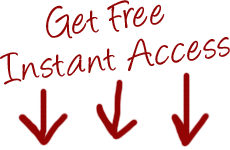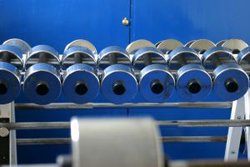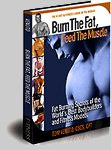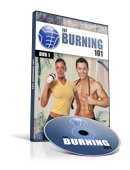Your Basal Metabolic Rate (BMR) Explained!
Basal Metabolic Rate, or BMR, makes up the vast majority of the number of calories you burn each day. You read that right. Believe it or not, but most of the calories you burn each day don't come from exercise.
If you want to know how to burn fat or build muscle, you can't do it without understanding your metabolism.
What is Your Basal Metabolic Rate?
The total number of calories you burn each day is made up your basal metabolism and your daily activities.
This article is number 1 in a 3 part series on your metabolism and how it affects your ability to build muscle and burn fat.
- Basal Metabolic Rate, or BMR
- Total Daily Energy Expenditure (TDEE)
- The Plan
Your Basal Metabolic Rate (BMR) is the number of calories you burn each day while at rest. The number does not include the energy your body uses to digest food. To put it another way, it is the amount of energy you use to keep your vital organs (your heart, liver, kidneys, muscles, skin, etc.) working.
Factors That Affect BMR
There are several factors that affect BMR, particularly if you want to increase metbabolism.
For example, as you get older, your metabolic rate slows down.
Recall that your basal metabolic rate is the energy you expend maintaining your vital organs. Of the list of vital organs, the only one that you can really change is your muscles. It only makes sense that as your muscles grow, it takes more energy to maintain them.
At the same time, your weight affects your BMR. If you are, say, 400 pounds, all of your organs work harder to keep you alive.
What if you lose weight? Well, that's where this all gets cool.
"To People Who Want To Burn Fat - But Can't Get Started"
FREE:Want to increase your fat burning?
Grab your complimentary subscription to Middle Management™ and get Ben's FatBurners 101™ videos now...
Module 1: Create a Concrete Plan with the 4 M's
Module 2: 4 Super Simple Ways to Stay Motivated
Module 3: Little Used Secret Burn More Fat 24-Hours Per Day
Module 4: 7 Easy Steps to Melting Fat Permanently
The subscription is FREE and only available through this offer.
Join below and receive your first lesson immediately without any delay.

As you shed pounds, your metabolic rate slows down, right? Of course it does. Your organs are under less stress.
What happens then is, if you don't change you're eating or exercising plan, is your weight loss grinds to a halt.
 Then, you cut calories some more. You eat
less. Eventually, your body will slow it's metabolic rate down so much, that
you're eating virtually nothing and not losing a pound.
Then, you cut calories some more. You eat
less. Eventually, your body will slow it's metabolic rate down so much, that
you're eating virtually nothing and not losing a pound.
How do you combat that?
When you increase lean body mass by building muscle, you'll not only look better, but burning fat will be so much easier. I can't stress enough how important keeping your metabolic furnace fired up really is... To put it plainly, when you increase lean mass (or build muscle, as I like to say), you increase metabolism.
Lean Body Mass Definition: Your lean body mass is made up of everything except body fat. It includes your organs, your bones and your muscle. The easiest lean body mass calculation is to calculate your body fat percentage and then subtract that number from 100%. Therefore, your lean body mass formula becomes:
Lean Body Mass = 100% - Body Fat Percentage
Read these facts carefully. According to the Mayo Clinic, your BMR makes up 60 to 75% of your daily calorie burn. The problem is most people focus on exercising more or eating less without thinking about their Basal Metabolic Rate.
Most of us have heard the term Resting Metabolic Rate, or RMR. Is this the same as BMR? Well, a lot of other sites will tell you that they are synonyms. Technically, they're wrong.
When talking about BMR, the term "basal" is a medical term meaning base. It is literally the minimum number of calories you need to stay alive. It's measured under strict rules: 12-hour fast, 8-hour sleep, laying on your back, etc.
Resting Metabolic Rate (you might also hear people say Resting Energy Expenditure), on the other hand, is less strict. It is the calories you burn, well, at rest. It is less rigorous than BMR. Resting Metabolic Rate is calculated 3 to 4 hours after your last meal and/or after the last time you worked out.
However, Basal and Resting Metabolic Rate are often used to mean the same thing, so you'll hear them used interchangeably.
Basal Metabolic Rate Calculation
The fact of the matter is you need to calculate your basal metabolism in order to even start to understand your daily caloric needs. The question is what is the best way for you to calculate your metabolic rate?
Burn the Fat, Feed the Muscle by Tom Venuto
If you're interested in burning fat the natural way - without supplements, without drugs and without messing up your metabolism, then this will be the most important book you will ever read. Burn the Fat is the #1 best selling diet and fitness ebook in internet history, and for good reason. Tens of thousands of men and women in 135 countries have burned fat and gained muscle with these powerful, all-natural techniques... and you can too!
There are many ways for you to do a free metabolism calculation. You can certainly use a basal metabolic rate calculation formula. The most popular of these is the Harris-Benedict Equation.
Using the Harris-Benedict Equation for metabolism calculation is an easy process.
The Harris-Benedict Equation uses the metric system. As a result, you need to turn your weight into kilograms (kg) and your height into centimeters (cm) to use this metabolism calculation.
To do this, first divide you weight in pounds by 2.2:
weight in pounds / 2.2 = weight in kilograms (kg)
Now, multiply your height in inches by 2.54.
height in inches x 2.54 = height in centimeters (cm)
Harris Benedict Equation for Men
BMR = 66 + (13.75 x weight in kg) + (5 x height in cm) -
(6.8 x age in years)
Harris Benedict Equation for Women
BMR = 655 + (9.6 x weight in kg) + (1.8 x height in cm) -
(4.7 x age in years)
There is another basal metabolic reate measurement which gives a little better estimation. It is called the Mifflin formula.
Mifflin Equation for Men
BMR = (10 x weight in kg) + (6.25 x height in cm) -
(5.0 x age in years) + 5
Mifflin Equation for Women
BMR = (10 x weight in kg) + (6.25 x height in cm) -
(5.0 x age in years - 161
While the Harris-Benedict equation works well for the vast majority of people wanting to basal metabolic rate calculation formula, it does have a few draw backs.
It doesn't take into account whether you decrease or increase lean body mass. For example, if you have a lot of muscle, then the formula will say you burn fewer calories than you actually do. If you are over fat, the equation will say you burn more calories than you actually do.
This brings us to the Katch-McArdle Formula...
Katch-McArdle Formula
The Katch-McArdle Formula is a basal metabolic rate calculation that you can use when you know your lean body mass measurement. As a result, it's a more accurate metabolism formula than Harris-Benedict Formula.
Because it uses your lean body mass measurement, there is no reason for separate formulas for men and women in the Katch-McArdle Formula.
As with the Harris-Benedict equation, you need to convert pounds to kilograms by dividing your lean body mass by 2.2.
BMR = 370 + (21.6 x lean body mass in kg)
There is also a slightly different formula for resting metabolic rate (or resting energy expenditure, as it's sometimes called) that you can use. This formula is called the Cunningham formula.
Cunningham Resting Metabolic Rate Calculation
Again, using kilograms,
RMR = 500 + (22 x lean body mass in kg)
I know all of that math can be intimidating. That's why I created a basal metabolic rate calculator to help you out. The BMR calculator actually does all 4 of your basal metabolic rate calculations mentioned above. To use the basal metabolic rate calculator, click the link below:
One you have your metabolic rate calculation, learn how to add you activities to calculate your daily caloric needs to build muscle, burn fat or see your 6 pack abs. You do this by calculating what's called your Total Daily Energy Expenditure.
Summary
Your basal metabolic rate (BMR) is the number of calories your body burns performing it's base functions and keeping your vital organs functioning. It is sometimes referred to as basal energy expenditure (BEE), resting metabolic rate (RMR), resting energy expenditure (REE), basic metabolic rate, or, simply, your metabolic rate. Two important factors affecting your metabolic rate are the amount of lean body mass you carry and your age.
Your metabolic rate is the foundation for calculating you daily caloric needs for those that want to burn fat or build muscle. There are several formulas (listed above) that you can use to calculate your BMR. You can also use our easy basal metabolic rate calculator to get your metabolic rate.
Next Steps
-
Calculate Your Basal Metabolic Rate.
Basal Metabolic Rate Calculator -
Learn How to Add in Your Daily Energy Factors to Figure Out Your Daily Caloric Intake Needs...
Total Daily Energy Expenditure (TDEE) -
Click the "Like" button.
Give us a +1.
Tweet About It
Tweet-
Let me know you're alive... Leave a comment below!
Leave "Basal Metabolic Rate (BMR)" and Return Home











